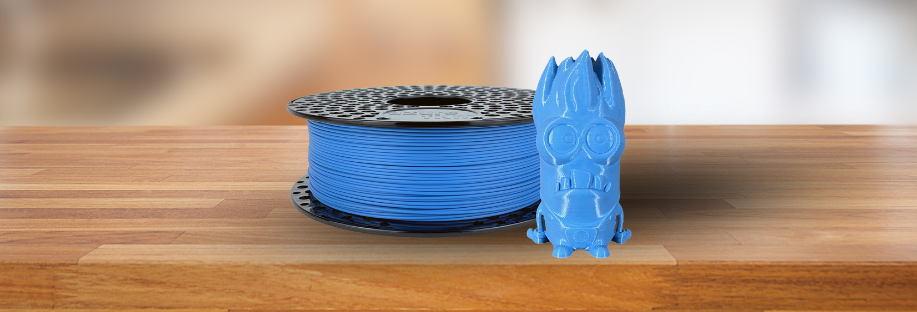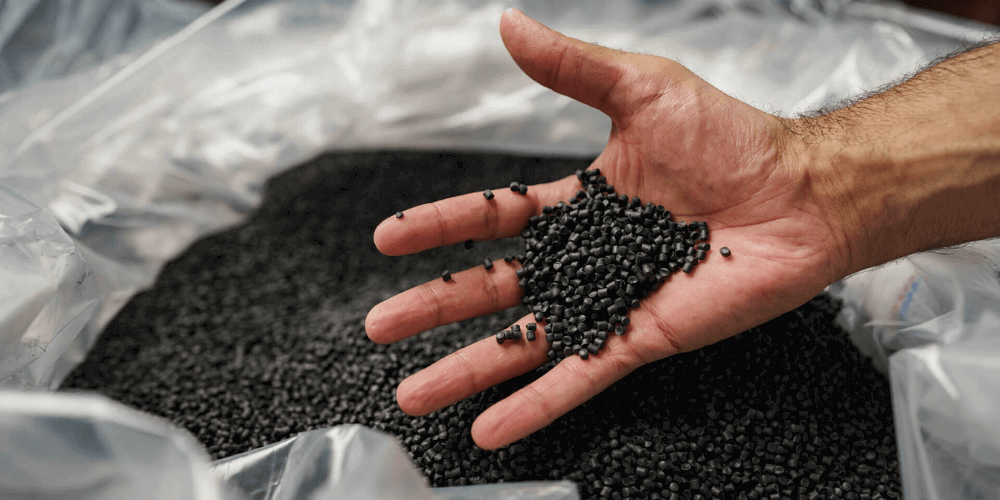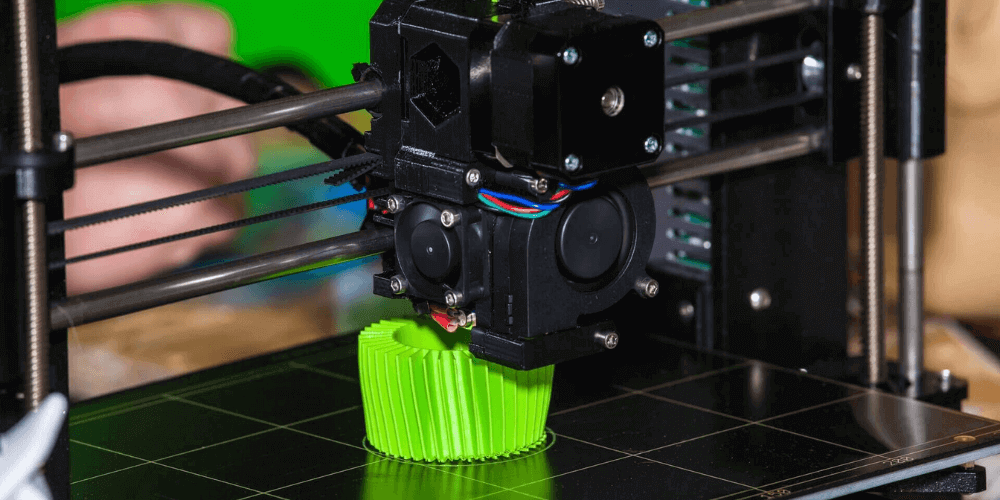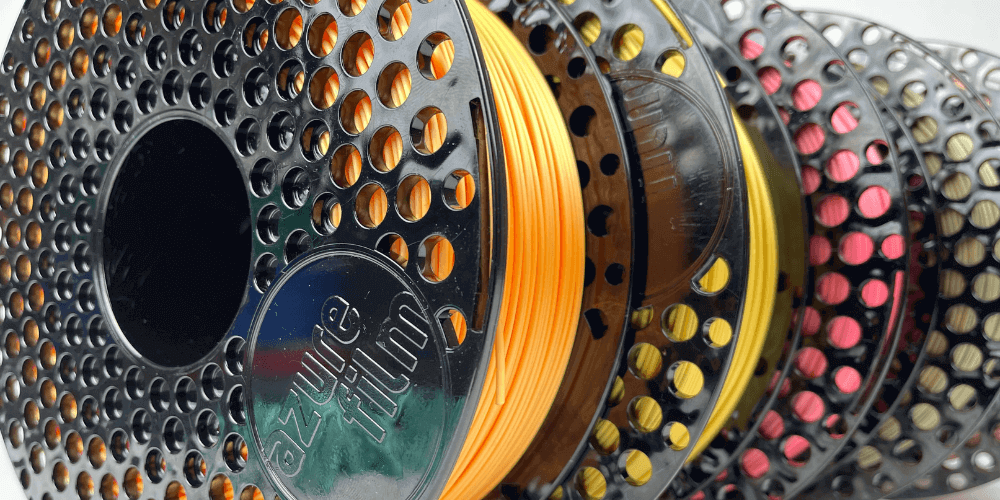PLA Filaments: Everything you need to know

PLA is one of the most used 3D printer filaments known for its extensive colour range and versatility and style. That’s why it is suitable for many printing applications. Those who want high-quality, vibrant, and aesthetic 3D prints often use PLA filaments.
PLA (Polylactic Acid) filaments are very easy to use and perfect for beginners to do experiments. But what makes it one of the best 3D printing filaments?
We have compiled everything you need to know about this amazing filament in this article. Better knowledge about filaments ignites your creativity to explore your potential.
What are PLA filaments?
PLA is an eco-friendly 3D printing filament extracted from organic sources. The raw material used here is corn starch sugarcane and such. The production process of this thermoplastic monomer is what sets it apart from other 3D printing filaments.
The manufacturers use biomass resources for producing PLA filaments. You can use the equipment used to manufacture petrochemical plastics to produce PLA filaments. In this aspect, the difference in raw products doesn’t matter. And this also doesn’t rise the manufacturing cost which is a big plus.
PLA is eco-friendly as it is biodegradable, needs 65% less energy compared to manufacturing regular plastics, and is conceivably solvent welded. Moreover, it doesn’t have toxins and produces 68% lesser greenhouse gases.
How Are PLA Filaments Made?
Fermented starch from plants like maize, sugarcane, or cassava is used to produce PLA filaments. The fermentation of the raw materials transforms them into lactic acid which then makes PLA. Producers commonly use two methods to make PLA filaments.
1. Polymerization
2. Condensation
In the polymerization method, you will need metal catalysts. And to make large PLA molecules, blend lactide with metal catalysts. The condensation method isn’t much different from polymerization. The by-products and the temperature are a bit different from the former process.
You can produce wide-ranging blends of PLA filaments too by mixing materials like copper, bamboo, pine, cedar, bronze, carbon fibre, and more.

Mixing wood with PLA filaments makes the 3D-printed furniture more realistic. If you want to give printed parts a glossy look combine metal with PLA. This will make the print strong too.
How To Print with PLA Filaments
Creality Ender, FlashForge and Artillery are some of the 3D printers most compatible with PLA materials. There are a few things you need to keep in mind whilst printing with PLA filaments are these are:
Temperature
To ensure the best printing outcome you need to be more concerned about the hot end and nozzle temperature rather than the bed temperature. When the temperature is high, your print’s interlayer bonding becomes great. High temperature means faster printing and better material flow.
But increasing the temperature too high can affect the print by deforming some of the print parts. Too much temperature melts the extruded layers excessively and this can lead to print sagging or oozing.
For the best result, the print temperature should range from 200–230°C while printing with PLA filaments. Besides the ideal temperature can vary depending on the nozzle size and printing speed too. So, do some experimental prints to find the best temperature for your 3D printer.
Bed Adhesion
Good bed adhesion is really important when printing with PLA or any other filaments. Bed adhesion refers to the capacity of the printed plastic to stay attached to the build plate while the printing process is still going on. If the print plastic comes loose, it can get fizzy.

To improve your printer’s bed adhesion, you can do the following:
- Wipe the print bed clean with isopropyl alcohol before printing.
- Apply bed adhesives such as hairspray or glue sticks.
- Regulating the bed temperature is a good option to increase adhesion. In terms of PLA, keep the temperature of the bed to 60°C for better bed adhesion.
- Misaligning can be a cause for poor bed adhesion. So, check if the bed is level or not before printing.
- Printing too fast can displace the plastic print so slowing down should do the trick.
- Changing the bed surface is another great option for increasing bed adhesion if the above-mentioned methods don’t work.
Some well-liked bed surface options to print with PLA filaments are:
Blue Tape
It is a kind of masking tape. You use it to cover the print bed to improve adhesion. These tapes tend to be porous which is perfect for filaments like PLA. Best blue tapes designed for improving the adhesiveness of the print bed are heat resistant.
Kapton tape
These tapes work like a base layer and fend the surface of a printing bed. You need to use juice, glue, hair spray, or similar products for adhesion. The best thing about these tapes is that they come in large rolls. Thus, one sheet is enough for the bed surface. But be very careful when spreading out Kapton tape on the bed. Air bubbles can get trapped under the tape and create crinkles.
PEI
PEI sheets are great for printing with diverse printing filaments. With this, you will not need adhesive sprays, clips, or glues or do surface preparation for printing.
Glass Bed
A glass bed is another excellent bed surface alternative you can consider. Glass beds are strong, dense, and durable and the price is reasonable too. We recommend getting carborundum glass. A 3-4 mm thick carborundum glass can handle the heat from 150 to 400 degrees.

PLA Print Speed
The printing speed should be above 50 mm/s in terms of printing with PLA filaments. You can make top-tier aesthetic models if the printing speed is near 100 mm/s. But high-speed printing can warp the PLA. That’s why you need to run tests using varied printing speeds. It will help you find the right printing speed for your printer and the filament. When printing with PLA filaments, it’s ideal to print slower for ensuring optimal results.
For printing complex models with details, you need to slow down the print speed. In case you are printing a simple model it is better to increase the speed. Boost the extrusion rate for faster printing. You can also use the printhead’s acceleration count to increase the speed.
Post-Processing and Finishing Process
When your printed model is ready the next important thing is to make it look shiny, glossy, and realistic. And the entire process of doing so is called post-processing. You can split the whole process into two categories one is cleaning and the other is finishing.
Pre-sanding, sanding, and smoothing are processes that fall in the cleaning category. And priming and painting fall into the second category.
Pre-sanding
In this process, you would need sandpaper, pliers, tweezers, and a toothbrush to smoothen the surface of the print.
Sanding
As the name suggests, you would need sandpapers in this post-processing stage. Buy 120-grit sandpaper PLA filaments and stay away from using them on the corners or edges of the print model. Smoothing is done to repair the deformity of prints thus it can take a lot of time. The bigger the print is the more time it will take for sanding.
Smoothing
Smoothing is really important to give your prints a shiny finish and just sanding cannot do that. Smoothing gets rid of the layer lines better than sanding can. Now, there are a lot of smoothing techniques you can use but here we are going to talk about chemical smoothing.
Chemicals such as ethyl acetate are a good option to smooth PLA filaments. This chemical will dissolve the layer lines without manual labour. Also, using the chemical doesn’t harm the layers underneath.
Painting
In this process you will require two things, one is a spray print and the other is a painter’s tape. The tape will firmly hold the print in place when you are spraying the paint. Spray paints come in vibrant colours and go very well with plastic.
PLA filaments Post Processing Considerations
Post-processing is really important to upgrade the appearance of the print, durability, and functionality. So, you need to be careful with the process. Following are some of the post-processing considerations you should keep in mind for a better printing finish:
- Post-processing techniques like pre-sanding, sanding, or smoothing can change a 3D print’s dimensional accuracy. And to maintain dimensional accuracy make sure you have certain software, callipers, gauges, or micrometres.
- Designing the prints into sub-assemblies allows a better smoothing experience. This way you can work on smoothing each part separately.
- We recommend painting your 3D prints in a controlled environment. This eliminates the chances of any contamination which can affect the paint.
- To avoid drips and gaps, don’t spray on your PLA 3D prints from a close distance. Spraying from too far can create the same problem so find the sweet spot which will bring optimal results.
- Make sure your 3D print is in a standing position before painting it.
- Wear appropriate clothes, masks, and gloves for safety before spraying print on your 3D prints. These paints are often toxic, flammable, and risky.
Advanced Tips and Troubleshooting for Printing Challenges with PLA Filaments
Temperature Is Too Cold to Print
If the temperature is not appropriate PLA filaments will not stick causing a rough surface. This can also make a particular part weak. Troubleshoot this problem by raising the temperature by 5°C. Now, try printing till you see the layers are adhering properly.
Temperature Is Too Hot to Print
Excess stringing or overhang droops mean the temperature is too high for printing. In terms of PLA filaments, the more heat you use the shinier the prints become. To avoid overhangs, get the best layer cooling system. Regulating the settings of the printer’s retraction can help with the stringing. Lessen the temperature by 5°C if both methods fail.
If The First Layer Doesn’t Stick
It can happen if the bed surface is not levelled or the height of the nozzle is not right. So, check these sections. If the distance between the bed and the nozzle is not right PLA filaments can get dragged around.
If The Printed Parts Have Small Bumps
This type of problem occurs when your printer doesn’t receive adequate data, your PLA filament is bad or the retraction settings lack tunning. Use your SDS card to troubleshoot this problem. Ensure to buy the best quality PLA filaments and check if the retraction settings are right.
Changing PLA filaments
- Heat the extruder to 120°C if it’s cold
- If the extruder temperature reaches 90°C begin to pull out all the PLA filaments and raise the temperature to 200°C if a problem arises in removing PLA.
- Raise the temperature and refill PLA filaments as usual.
- Now run the new colour filament till you see nothing but the new colour.
Common Issues When Printing with PLA Filaments
Poor Bed Adhesion
PLA needs to be soaked in water hence the extrusion problem. Drying the filaments will fix this problem. Use a filament dryer or oven to bake. Lowering the printing speed also helps. To avoid fusing, keep the temperature lower than 50°C.
Stringing
Filament stringing happens when the extruder gets too heated or the retraction settings are wrong. Thus, check if the settings are right and lower the temperature if the problem is with the extruder.
Zits & Blobs
Permit the coasting function so it can turn off the extruder for a bit. During this time the filament can cool down a little for a better print. Also, tune the retraction settings for avoiding Zits & Blobs.
Warping
Enhancing the temperature of the bed, and using adhesives and enclosure should prevent warping. Adjusting the setting of the first layer and applying anti-warping tabs can also help.

PLA filaments are very popular, making them the second most manufactured bioplastic. It is relatively cheap and easier to handle. With the right printing settings, PLA filaments can create quality prints.
Keep reading
PETG Hyper Speed: Unlocking new performance levels in 3D printing
At AzureFilm, we believe innovation often starts with curiosity. Our PETG Original filament has long been a reliable choice for makers seeking strength, durability, and consistent print quality. But recently, we asked ourselves: how fast can it really go? To find out, we conducted extensive testing—adjusting printer settings, tweaking slicer parameters, and pushing print speeds [...]
Top 12 Easter STL files
Easter is just around the corner, and we’ve rounded up 12 creative STL files for 3D printing that will make your celebrations even more special. Whether you’re looking to decorate your home, create unique gifts, or add a personal touch to your Easter festivities, these designs have got you covered. Bonus: To make your 3D [...]
The best materials for 3D printing
The advent of 3D printing has undoubtedly changed the world, enabling simple and fast creation of complex objects. Businesses, scientists, independent creators, and all of you who are developing new products can now choose from a variety of materials for your unique projects and create a finished product in just a few hours. 3D printing [...]



